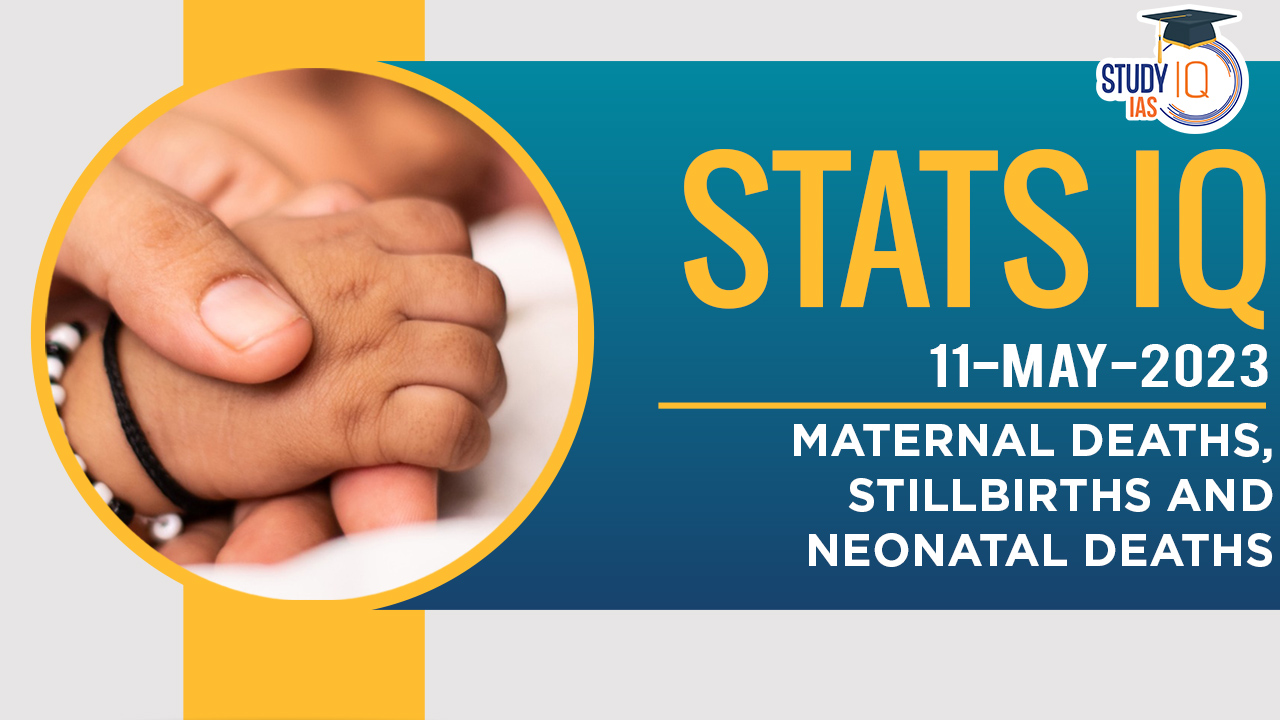Context: A new report by the World Health Organization (WHO), the United Nations Children’s Fund (UNICEF), and the United Nations Population Fund (UNFPA) has highlighted the challenges faced in reducing maternal deaths, stillbirths, and newborn deaths globally.
| Number of Deaths in 2020-21 |
There were a combined 4.5 million deaths — maternal deaths (0.29 million), stillbirths (1.9 million) and newborn deaths (2.3 million) in 2020-2021. |
| Progress in reducing Maternal Mortality Ratio (MMR),
Stillbirth Rate and Neonatal Mortality Rate (NMR) |
- MMR: MMR observed an annual reduction rate of 2.8% between 2000 and 2009, which decreased to 1.3% between 2010 and 2020.
- An improvement of reducing this indicator by 11.9% is required to meet global targets of an MMR equivalent to 70 deaths per 1,000 live births.
- Stillbirths: Between 2000 and 2009, the stillbirth rate was reduced by 2.3% and by 1.8% between 2010 and 2021.
- A 5.2% reduction is required between 2022 and 2030 to meet global targets of less than 12 stillbirths per 1,000 live births.
- NMR: NMR had a 3.2% reduction between 2000 and 2009, 2.2% reduction in 2010 and 2021.
- NMR needs to be reduced by another 7.2% between 2022 and 2030 to meet the global target of ending newborn mortality.
|
| Regions with Largest Number of Deaths |
Sub-Saharan Africa and central and Southern Asia are the regions experiencing the largest number of deaths. |
| Deaths in India |
- India saw 7,88,000 maternal deaths, stillbirths and neonatal deaths in 2020, of the total 4.5 million deaths globally.
- India accounts for 17% of global live births which could be a factor for the large number of maternal deaths, stillbirths and neonatal deaths.
- India is followed by Nigeria, Pakistan, Democratic Republic of the Congo, Ethiopia, Bangladesh and China for maternal deaths, stillbirths and neonatal deaths.
|
| Reasons for Slow global Progress in Reducing Maternal and Newborn Deaths |
- Global challenges posed by the COVID-19 pandemic
- Climate change, conflicts and other emergencies
- High cost of living within countries
- Under-investment in primary health care
- Little political intent
- Rising poverty and worsening humanitarian crises
|
| Key Recommendations |
- To achieve SDG targets by 2030, life- saving interventions for antenatal, intrapartum and postnatal care for women and newborns need to be implemented.
- Poorest women and those in vulnerable situations should be targeted.
- Smarter investments in primary health care are needed.
- To increase survival rates, women and babies must have quality and affordable healthcare before, during and after childbirth.
- Access to family planning services.
- More skilled and motivated health workers, especially midwives, are needed.
- Essential medicines and supplies, safe water, and reliable electricity should be provided.
- Improving maternal and newborn health requires addressing harmful gender norms, biases and inequalities.
- More data, better data and data from different levels should be collected for more information.
|
Sharing is caring!


 APPSC Exam Calendar 2026 Out: Official E...
APPSC Exam Calendar 2026 Out: Official E...
 India’s New Earthquake Design Code 202...
India’s New Earthquake Design Code 202...
 Femicide 2025: Italy Criminalizes Gender...
Femicide 2025: Italy Criminalizes Gender...

























